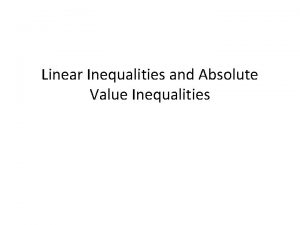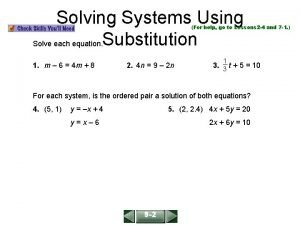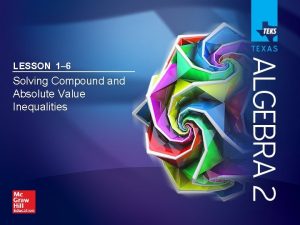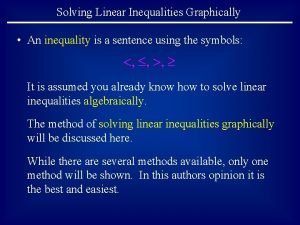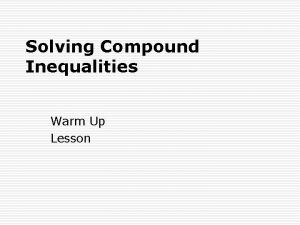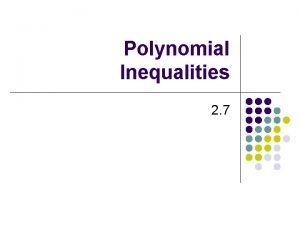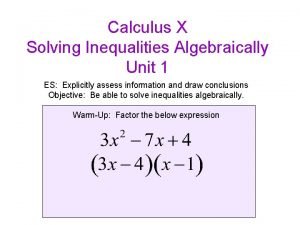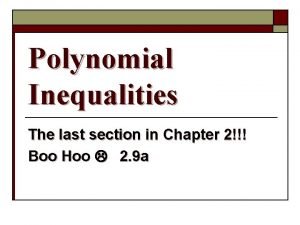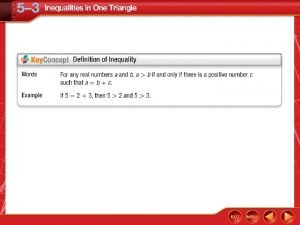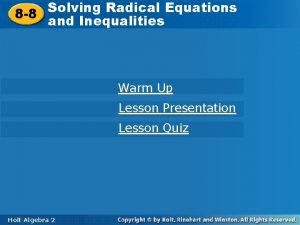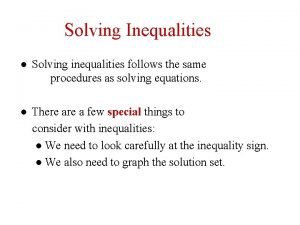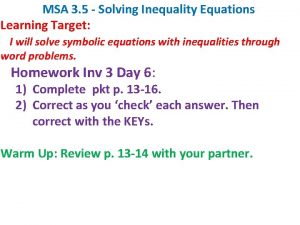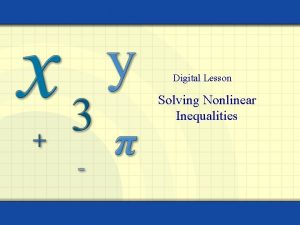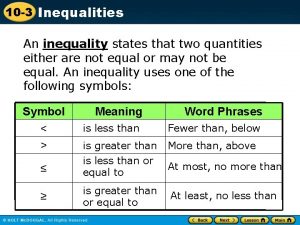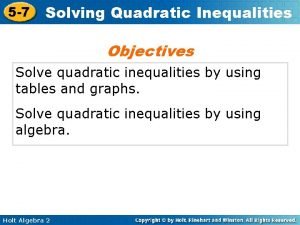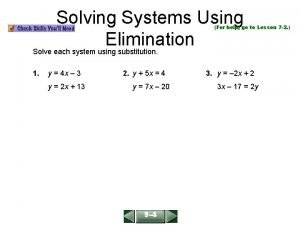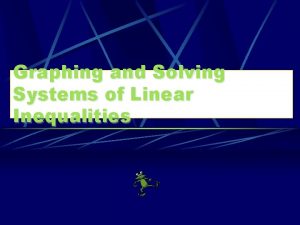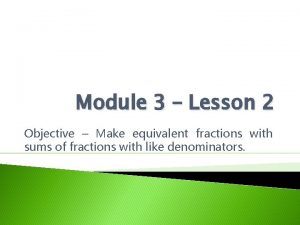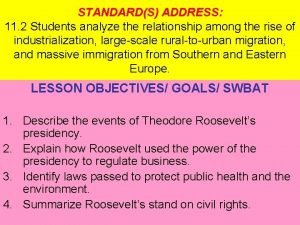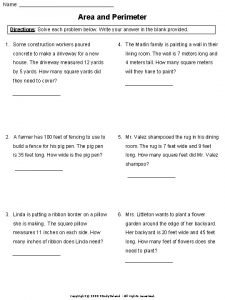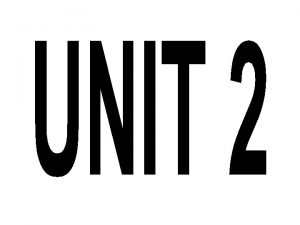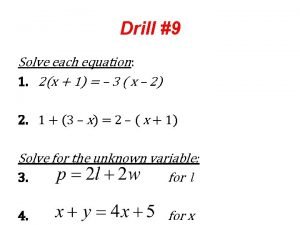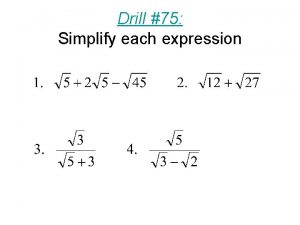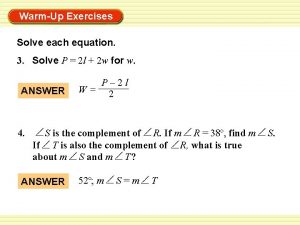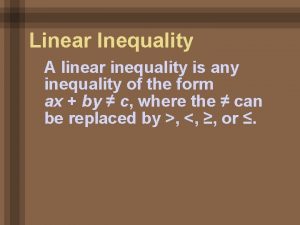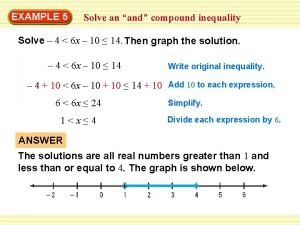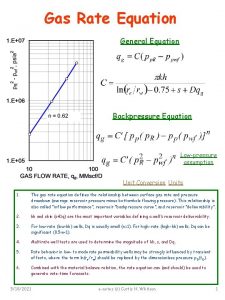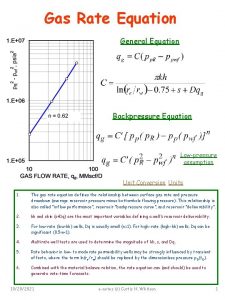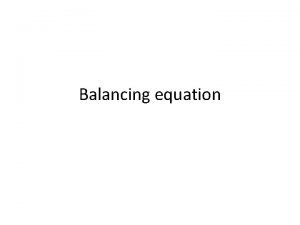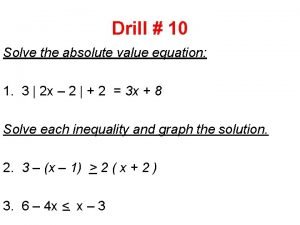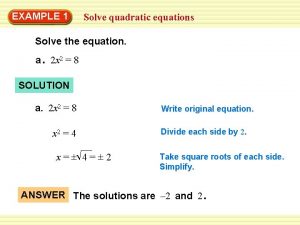Drill 81 Solve each equation or inequality Drill





















- Slides: 21

Drill #81: Solve each equation or inequality

Drill #83: Simplify each expression

5 -9 Complex Numbers Objective: To simplify square roots containing negative numbers and to add, subtract, and multiply complex numbers

(1. ) i Definition: i is called the imaginary unit. What is the value of I squared?

(2. ) Pure Imaginary Numbers Definition: For any positive number b, where i is the imaginary unit, and bi is called a pure imaginary number. Example:

Evaluating the Square Root of Negative Numbers* To find the square root of negative numbers: 1. First separate the negative 2. Evaluate each root separately and multiply

More Examples Ex 1. Ex 2.

Powers of I *

Finding Powers of i* Powers of i are cyclical. They repeat after To find : 1. Divide n by 4 and keep only the remainder r 2. , where r is the remainder of n/4 Note:

Example (Powers of i) Find the following: Ex 1. Ex 2. Ex 3.

(3. ) Complex Numbers Definition: A number in the form of a + bi where a and b are real numbers and i is the imaginary unit. a is called the real part. b is called the imaginary part.

Adding Complex Numbers* To add complex numbers: 1. add the real parts together (this is the real part of sum) 2. add imaginary parts together (this is the imaginary part of the solution). (a + bi) + (c + di) = (a + c) + (b + d)i Ex: (5 + 6 i) + (2 + 3 i) = 7 + 9 i

Adding Complex Numbers Examples: Ex 1. (2 + 9 i) + (3 + 4 i) Ex 2. (5 + 6 i) - (2 + 3 i) Ex 3.

Multiplying Complex Numbers* Definition: To multiply imaginary numbers you need to FOIL. (a + bi)(c + di) = = ac (first) + adi (outside) + bci (inside) + bd (last) = (ac - bd) + (ad + bd)i Ex: (2 + 3 i)(4 + 5 i) = 2(4) + 2(5 i) + 3 i(4) + 3 i(5 i) = 8 + 10 i + 12 i – 15 = -7 + 22 i

Multiplying Complex Numbers Ex 1. (2 + 3 i)( 1 + 4 i) Ex 2. (6 + 2 i)( 3 – 2 i) Ex 3. (3 – 5 i)(3 + 5 i)

(4. ) Complex Conjugates Definition: Numbers of the form a + bi and a – bi are called complex conjugates. The product of complex conjugates is: Example: 3 + 2 i and 3 – 2 i are complex conj.

The Product of Complex Conjugates*

Dividing by Complex Numbers* Rationalizing Complex Denominators To rationalize a complex denominator you need to multiply the numerator and denominator by the complex conjugate. Example: Simplify

Solving 2 nd Equations* (no 1 st degree term) To solve equations: 1. Isolate the square term. 2. Take the (+/-) square root of both sides. Example:

(5. ) Equal Complex Numbers Definition: a + bi = c + di if and only if a = c and b = d. The real parts must be equal and the imaginary parts must be equal.

Equal Complex Numbers* Find values of x and y for which each equation is true:
 Absolute value inequalities interval notation
Absolute value inequalities interval notation 6-2 solving systems using substitution
6-2 solving systems using substitution Lesson 1-6 solving compound and absolute value inequalities
Lesson 1-6 solving compound and absolute value inequalities Representing inequalities graphically
Representing inequalities graphically Lesson 1-6 compound inequalities
Lesson 1-6 compound inequalities Solve polynomial inequalities
Solve polynomial inequalities Mei wants to solve the inequality
Mei wants to solve the inequality Xsolving
Xsolving Solving linear inequalities involving absolute value
Solving linear inequalities involving absolute value Solve the inequality analytically
Solve the inequality analytically Illustrate exterior angle inequality theorem
Illustrate exterior angle inequality theorem 6.7 solving radical equations and inequalities
6.7 solving radical equations and inequalities What is an inequality
What is an inequality Solve the inequality
Solve the inequality 2-6 nonlinear inequalities
2-6 nonlinear inequalities Write an inequality for each situation
Write an inequality for each situation Quadratic inequalities example
Quadratic inequalities example 6-3 solving systems using elimination
6-3 solving systems using elimination Solve by graphing
Solve by graphing Show each expression on a number line. solve
Show each expression on a number line. solve What steps did roosevelt take to solve each problem?
What steps did roosevelt take to solve each problem? Solve each problem answer key
Solve each problem answer key
